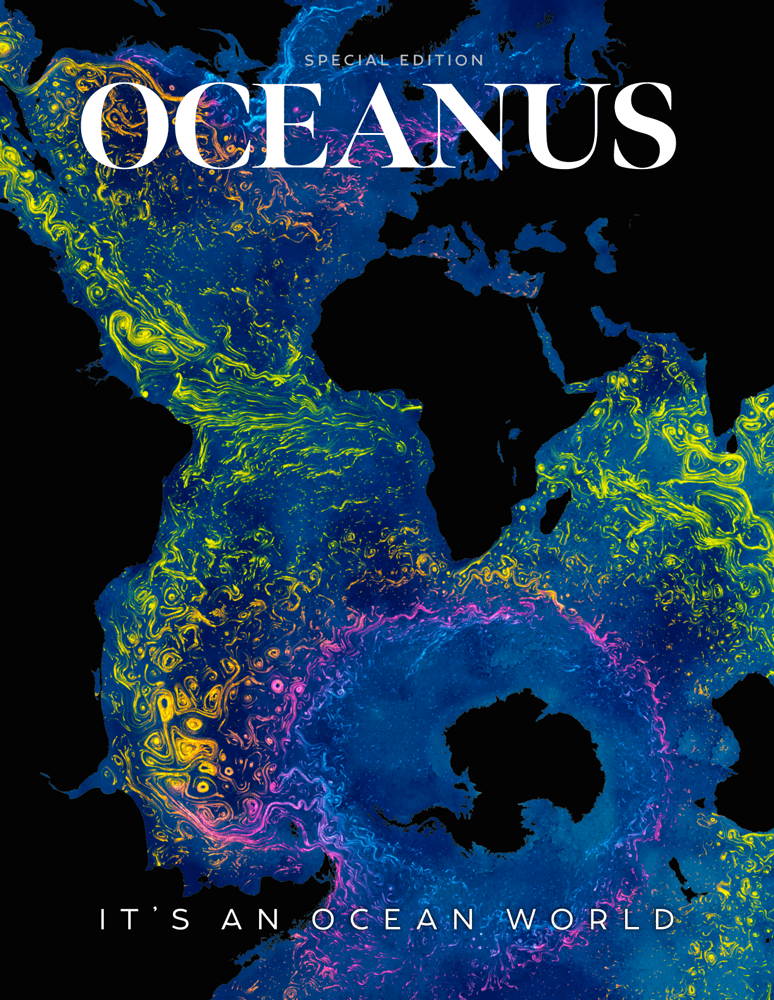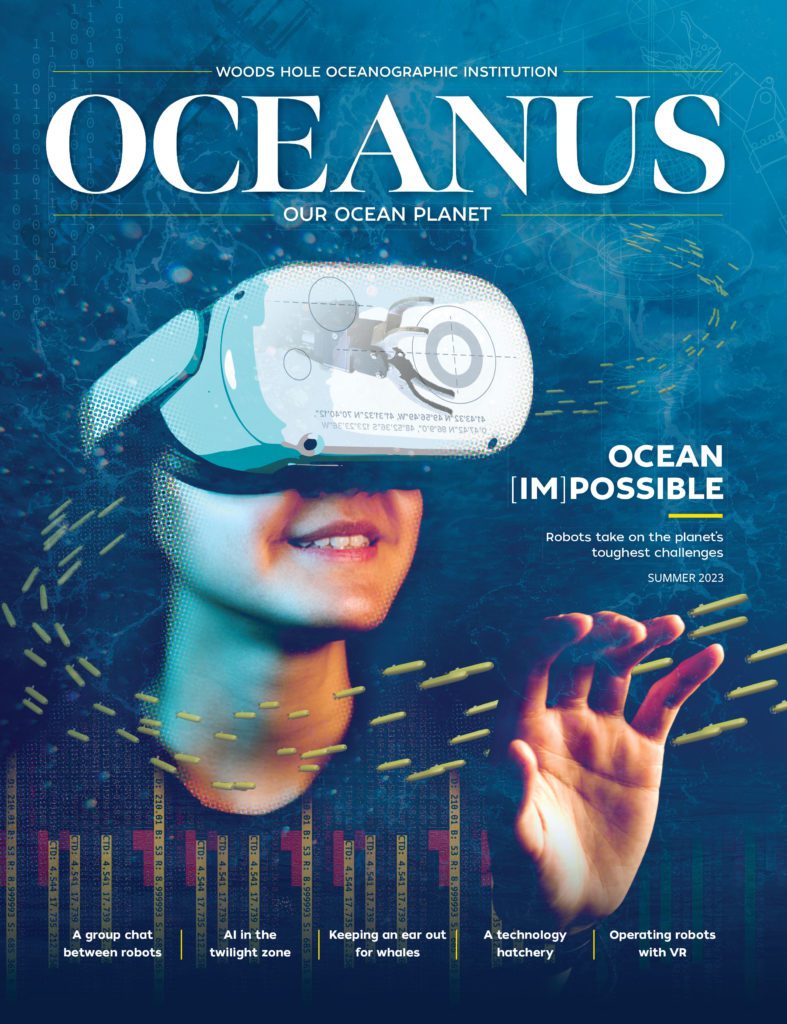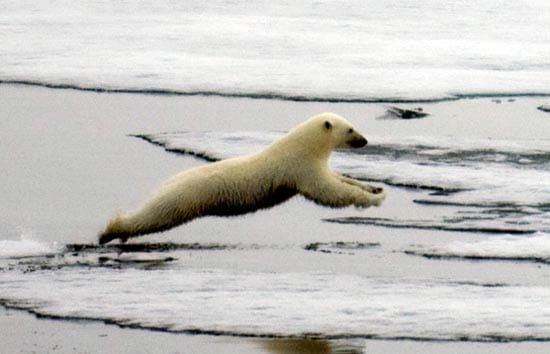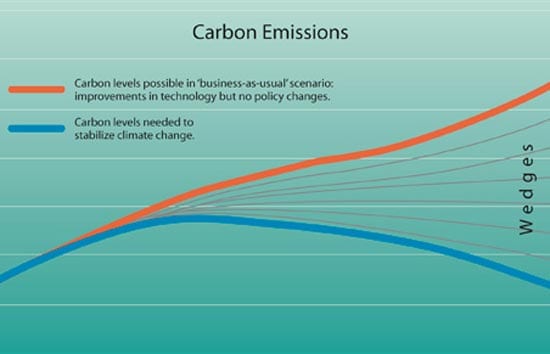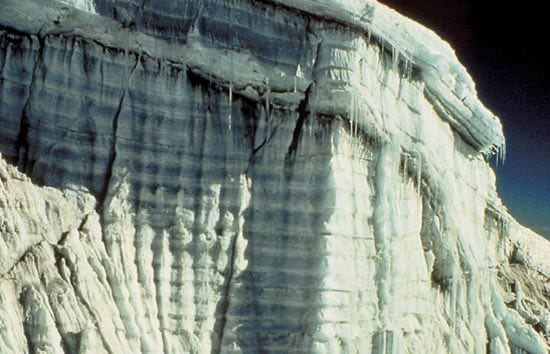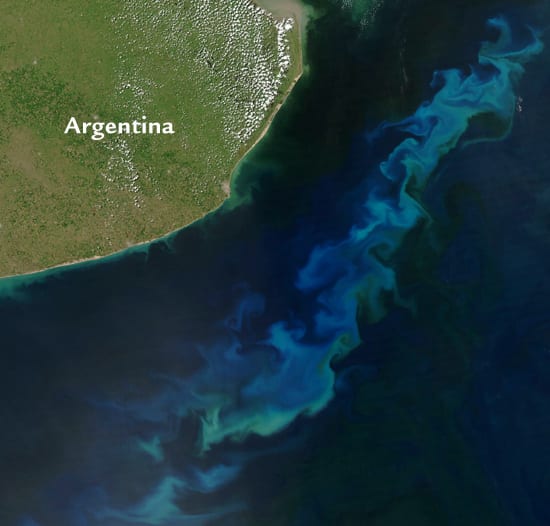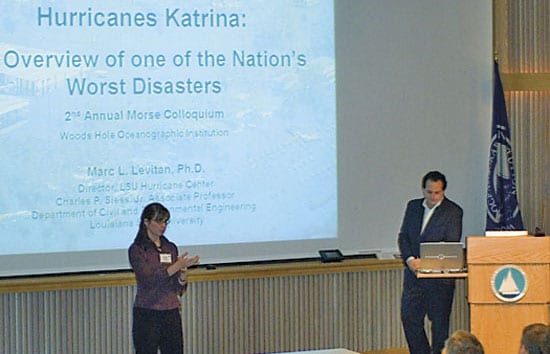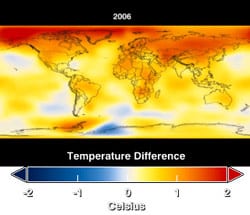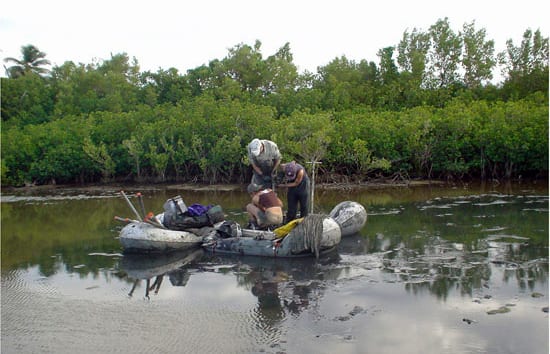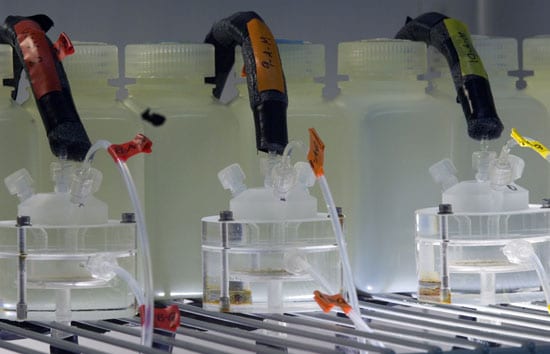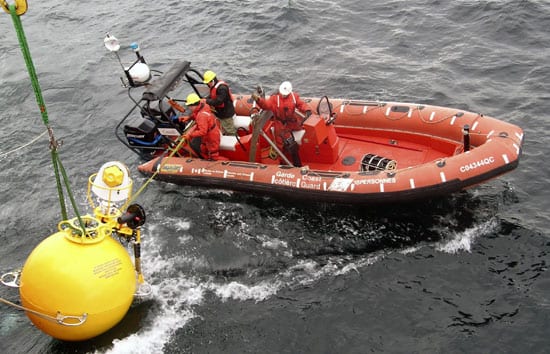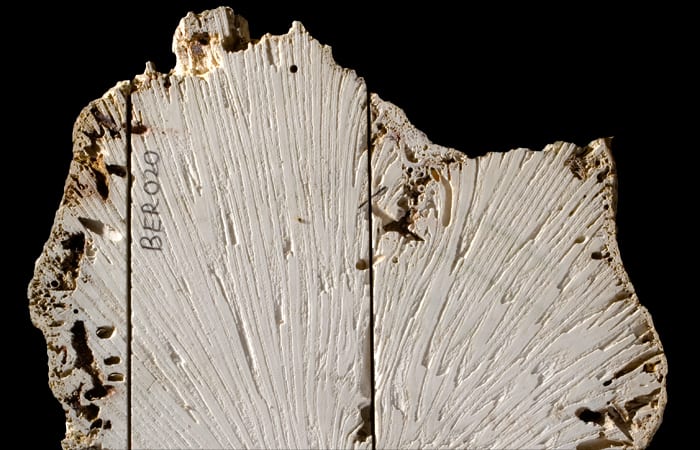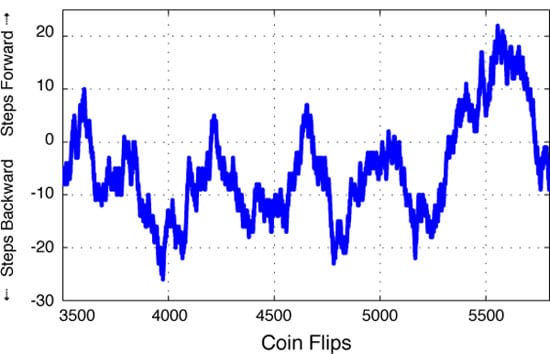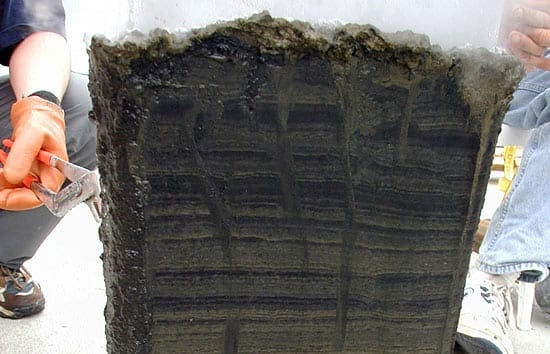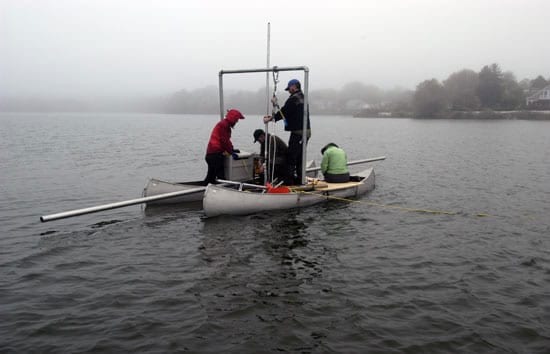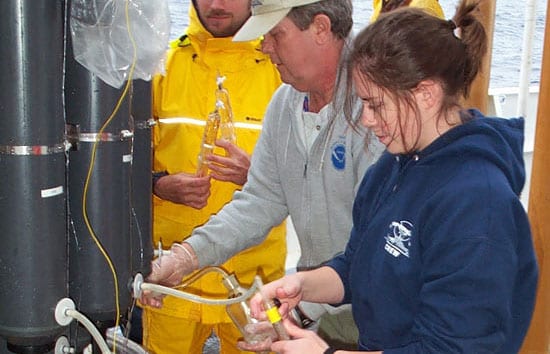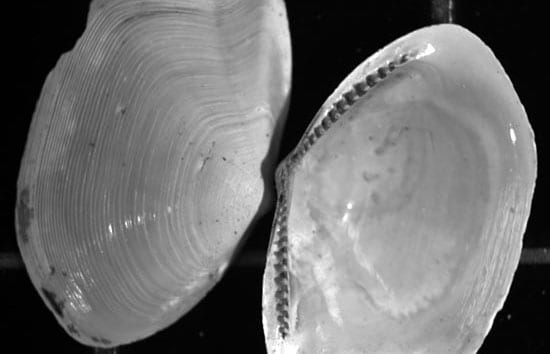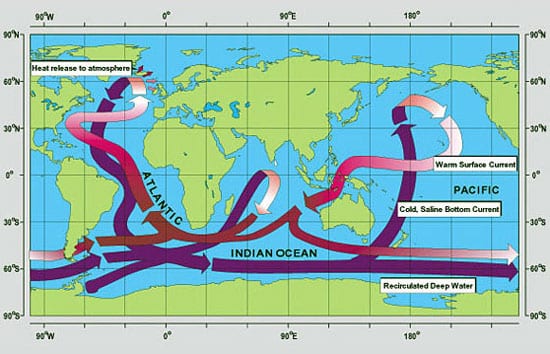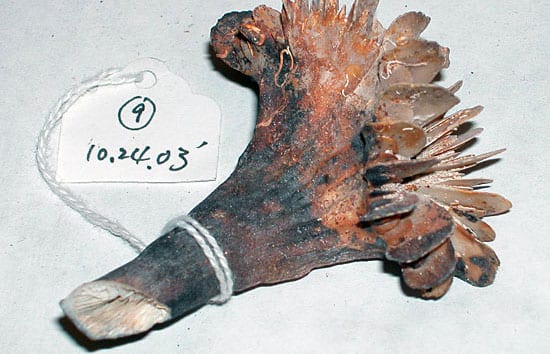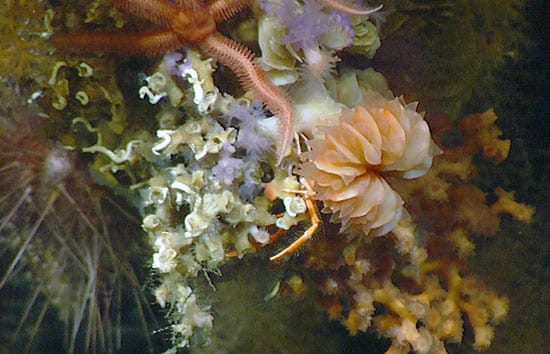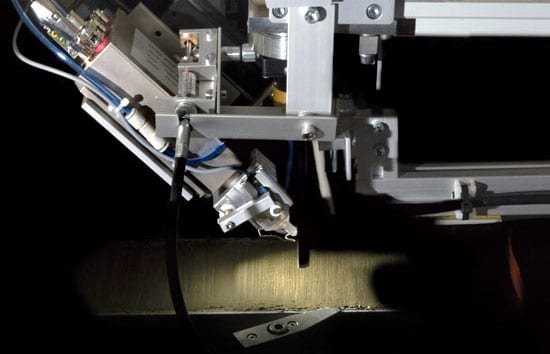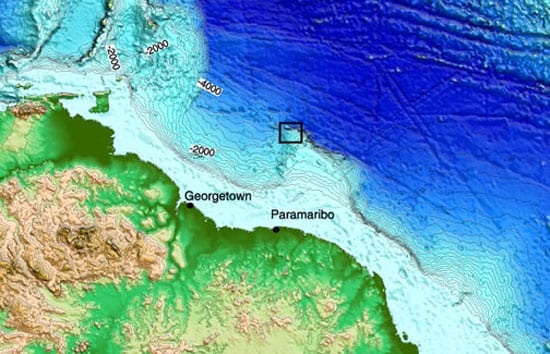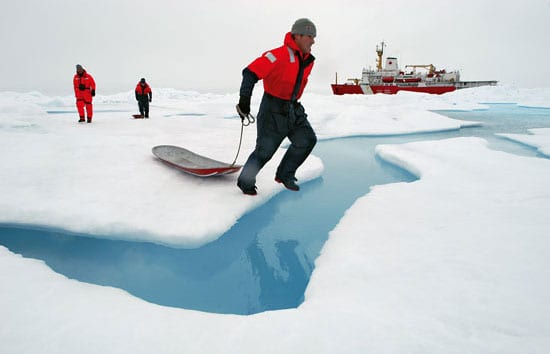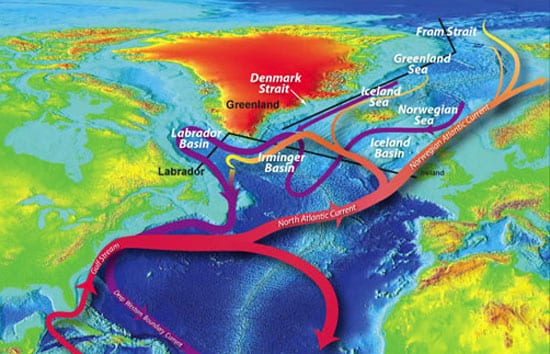Oceanus Online Archive
Melting Ice Threatens Polar Bears’ Survival
The Department of Interior’s imminent decision on whether to place polar bears on the federally protected endangered species list has focused attention on a recent study that documents for the…
Read MoreDumping Iron and Trading Carbon
Debating the idea of fertilizing the ocean with iron can feel a little like riding a seesaw. On the up side is iron’s eye-catching potential to set off enormous plankton…
Read MoreLessons from Nature, Models, and the Past
The first part of biogeochemist John Martin’s famous prediction—“Give me half a tanker of iron, and I’ll give you an ice age”—has been proved partly right: Iron is the only…
Read MoreWill Ocean Iron Fertilization Work?
In this age of satellites, it’s fairly easy to answer the basic question of whether adding iron to the ocean can stimulate a plankton bloom. When storms over land blow…
Read MoreFertilizing the Ocean with Iron
“Give me half a tanker of iron, and I’ll give you an ice age” may rank as the catchiest line ever uttered by a biogeochemist. The man responsible was…
Read MoreMorss Colloquia Focus on Science and Society
Woods Hole Oceanographic Institution launched a new program, hosting three “Morss Colloquia” since October 2006. Enabled by a generous grant from Elisabeth and Henry Morss Jr., the public colloquia concerned…
Read MoreScientists Unearth Long Record of Past Hurricanes
Reaching down into the muck below a lagoon off Puerto Rico, two geologists at Woods Hole Oceanographic Institution reached back 5,000 years to compile the longest record of strong hurricanes…
Read MoreCell-sized Thermometers
Climate shifts are a repeating feature in Earth’s history, but humans have added so much greenhouse gas (especially carbon dioxide) to the atmosphere that climate is warming in our lifetimes.…
Read MoreLetter from Kangiqsujuaq
Charlie’s Motel was a welcome break from Kangiqsujuaq’s airport in northernmost Quebec, where we had just spent six hours uselessly waiting for the plane that would take us home. But…
Read MoreDead Corals Do Tell Tales
Sometime around the beginning of the 17th century, a tiny drifting larva found the perfect piece of real estate to settle down, on the shallow seafloor off the island of…
Read MoreWhy the West Wind Wobbles
Winds and temperatures in Earth’s atmosphere vary from month to month and year to year in countless ways. Decades of monitoring the weather and climate have revealed a few simple…
Read MoreSunspots, Sea Changes, and Climate Shifts
Natural materials such as shells, ice, corals, and tree rings contain clues to help scientists piece together how our oceans, atmosphere, and land have changed in the past. The history…
Read MoreLakes and Climates Have Their Ups and Downs
Between 5,400 and 3,000 years ago, something happened to New England’s climate. The region became drier. Water levels in lakes dropped. Several droughts persisted for hundreds of years, changing the…
Read MoreHow Long Can the Ocean Slow Global Warming?
It is 4:30 a.m., far from land. A group of scientists clad in bright yellow foul-weather gear gathers in the open bay of a research ship. They wait in the…
Read MoreOcean Circulation and a Clam Far From Home
In my first year of graduate school, I was stumped by a big question on my final exam in biological oceanography. Maybe I had missed the relevant lecture or an…
Read MoreThe Once and Future Circulation of the Ocean
The short history of modern oceanographic observations—less than a century’s worth, really—doesn’t give us a long track record to evaluate how the ocean’s circulation has operated and changed in the…
Read MoreWhat Other Tales Can Coral Skeletons Tell?
In 2003, we traveled by ship to the New England Seamounts—a chain of extinct, undersea volcanoes about 500 miles off the East Coast of North America—to help collect dead corals…
Read MoreThe Coral-Climate Connection
Are the climate changes we perceive today just part of the Earth system’s natural variability, or are they new phenomena brought about by human activities? One way to find out…
Read MoreAnalyzing Ancient Sediments at Warp Speed
Like a toy out of a science fiction story, the X-ray fluorescence core scanner reveals intimate details of the composition of ancient mud and sediment–which can contain a variety of clues about past climate and environmental conditions on Earth–without breaking the surface. In a matter of hours, the XRF simultaneously captures digital photographs and X-ray images of every millimeter of a core sample, while detecting the presence of any of 80 chemical elements.
Read MoreAn Ocean Warmer Than a Hot Tub
Scientists have found evidence that tropical Atlantic Ocean temperatures may have once reached 107°F (42°C)—about 25°F (14°C) higher than today. The surprisingly high ocean temperatures occurred millions of years ago…
Read MoreThe Flywheel of the Arctic Climate Engine
A key component of the Arctic climate clockworks is the Beaufort Gyre?a bowl of cold, icy, relatively fresh waters north of Alaska that is swept by prevailing winds into a circular swirl larger than the Gulf of Mexico.
Read MoreIs Global Warming Changing the Arctic?
In the Arctic, the air, sea ice, and underlying ocean all interact in a delicately balanced system. Four ambitious Arctic projects are pulling back the icy veil that shrouds our understanding of the Arctic Ocean?s role in our climate system. (First of a five-part series.)
Read MoreFresher Ocean, Cooler Climate
Large and climatically sensitive regions of the North Atlantic Ocean have become less salty since the late 1960s, a trend that could alter global ocean circulation and spur climate changes by the 21st century.
Read More